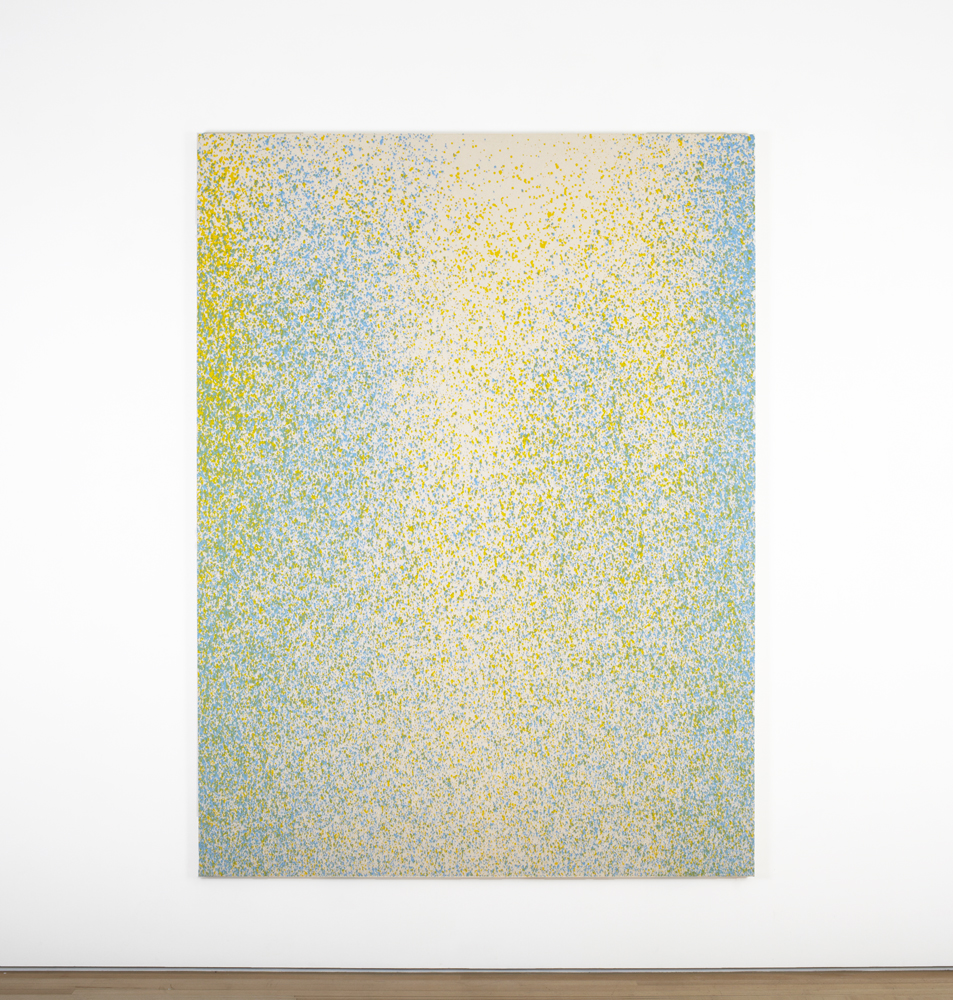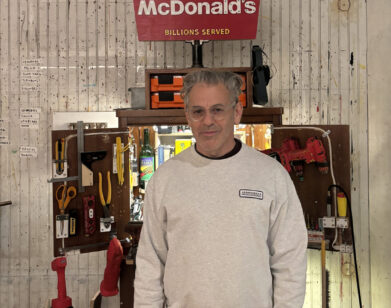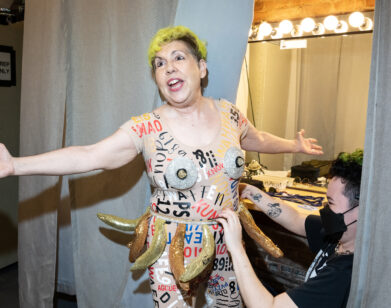Lucien Smith
It’s easy to make something that looks like art but isn’t—especially in an abstract form . . . But a way to avoid that dangerous territory is to have the language and ideas. Lucien SmitH
At the top of the stairway leading to Lucien Smith’s fifth-floor Tribeca studio, the roof door hangs open, revealing a rectangle of sky. Inside the supply-strewn workstation, a dramatic skylight rises in the ceiling. A bumper sticker reading NATURE IS MY CHURCH—which also happens to be the name of Smith’s latest solo show at New York’s Salon 94—is affixed to the side of a scanner. Even the 24-year-old New York City-raised Smith’s outfit announces this synthesis of nature and city: he wears a black Do the Right Thing movie T-shirt along with a camouflage hunting cap.
Smith’s art—of which a large body concerns painterly abstraction—seems to push for a sense of order or pattern in the natural world, or at least some final refuge to safeguard or revere. In fact, it was after he graduated from Cooper Union in 2011 that Smith decided to spend time upstate exploring his craft. “I was paying $2,700 for a studio with one bedroom,” he says. “For the same price, I found this house near Hudson that had acres. I suddenly had all of this outdoor space and it seemed like a waste not to work with it.” The result was a surprising suite of abstractions called Rain Paintings, consisting of monochromatic or multicolored drops sprayed via an old-fashioned paint-filled fire extinguisher on white canvas. “First, I had to figure out the ratio of water to paint to get the drops consistent,” Smith explains. “And then I had to figure out the angle and distance—there were so many factors. I ended up working inside a canopy tent so I could gauge my distance from the canvas.” The resultant paintings are quiet meditations in which the artist’s hand is tempered by gravity and any cynical reading is negated by the optic play of color and pigment. “The first ones I did were navy and yellow,” he says. “Then I started thinking about how rain is depicted in illustrations. In comics that use gouache or watercolor, they use light blue, so I started using that color.”
Smith’s interest in nature has evolved to include loose enamel brushstrokes fluttering across canvases as if to evoke the movement of rivers (the paintings are named after lines from Biblical verses) and comical pie tins splattered across canvases, as if gravity is having the last laugh. What’s striking is Smith’s continual allusions to religion, ecology, and nature; he is perhaps the closest of his peers to the AbEx experimenters in perceiving painting as a pathway to a higher spirituality. Accordingly, Smith understands the value of intention over artifice. “It’s become popular to be an artist,” he says. “People understand what art is supposed to look like, and so it’s easy to make something that looks like art but isn’t—especially in an abstract form. I’ve been guilty of that in the past. But a way to avoid that dangerous territory is to have the language and ideas, those tools, which come before what the final piece is going to look like.”
To return to The New Abstract, click here.







